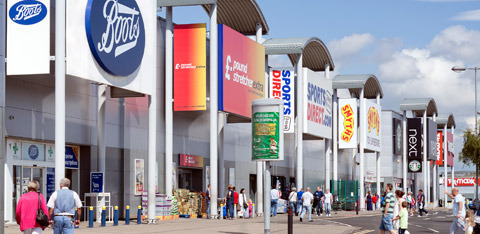Consumer products and retail companies are priming for growth in the next 12 months, with 53% expecting to pursue mergers and acquisitions and a third intending to conduct larger deals in the future. That is according to Ernst & Young‘s 12th Global Capital Confidence Barometer, but while there is an increasing appetite for larger deals, 82% of retail company executives expect to invest in the lower middle market.
In line with global respondents overall, more than half of retailers expect to make an acquisition in the next 12 months. This growing appetite for mergers and acquisitions is fuelled by a surge in economic confidence, with 84% noting that global economic conditions are improving — a sizeable uptick on October 2014 (54%).
This optimism, however, is tempered by investment expectation. The majority of retail companies (82%) intend to allocate capital to mergers and acquisitions in the lower middle market. 79% plan to make an acquisition of up to £161m in the next year, while only 1% intend to allocate more than US$1b to M&A. This cautious approach is also reflected by deal pipeline expectation, with 34% of CPR executives expecting the number of deals to decline over the next 12 months — a significant about-turn on October 2014 sentiment (6%).
Gregory J. Stemler, EY Global Consumer Products Transaction Advisory Services Leader, says:
“The Barometer points to increased optimism in the global economy and a growing appetite for mergers and acquisitions. But today, intense cost scrutiny and efficiency are central tenets of corporate strategy. Consumer products and retail companies in particular are extending caution in their mergers and acquisitions planning by focusing on the lower middle market, despite the trend toward a small number of big ticket acquisitions.”
Retailers are also shifting the scope of business into new markets and services, with 75% focusing on innovative investment. In particular, large food companies are responding to changing consumer preferences for healthier options and ingredient transparency. This is reflected by EY‘s Consumer Products Deals Quarterly Q1 2015, which shows that companies are increasingly diversifying portfolios by embracing health and wellness.
As stagnant volume growth continues, cost reduction and operational efficiency remain the focus for more than half of consumer product and retailer executives (52%, up from 36% in April 2014). Similarly, 42% of respondents are elevating cost reduction and improving margins on the boardroom agenda.
Strategic portfolio optimization also remains a key priority for retailers as they seek to achieve the right balance for profitable growth. Twenty percent of respondents expect to invest in new technologies to develop innovative products, while 18% intend to change the mix of existing products. Indeed, 33% believe that challenges in setting up a sustainable and profitable growth strategy are the main obstacles to completing acquisitions.
Stemler says: “Achieving the right balance for profitable growth is still the main focus for the consumer products and retail sector. Companies are seeking to create value and are pursuing mergers both to improve their bottom line by cutting costs, and also to grow their top line in a low-growth environment through portfolio optimization.”
More so than in other industries, retailers primarily aim to enhance their share in existing markets rather than expanding into new geographic markets (44% of respondents). According to the Barometer, the UK, China, Australia, India and the US are the top five destinations of choice for consumer products investors. China and India remain the emerging markets of choice for many executives, driven by relatively strong growth and great market potential.


















